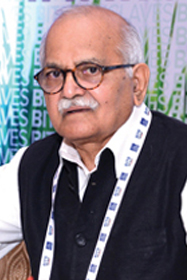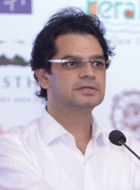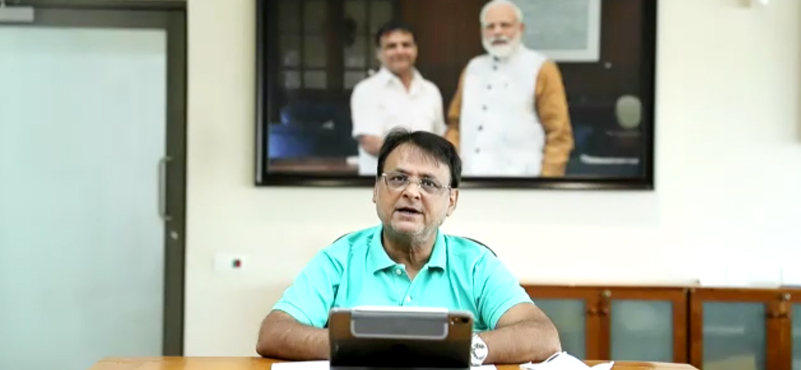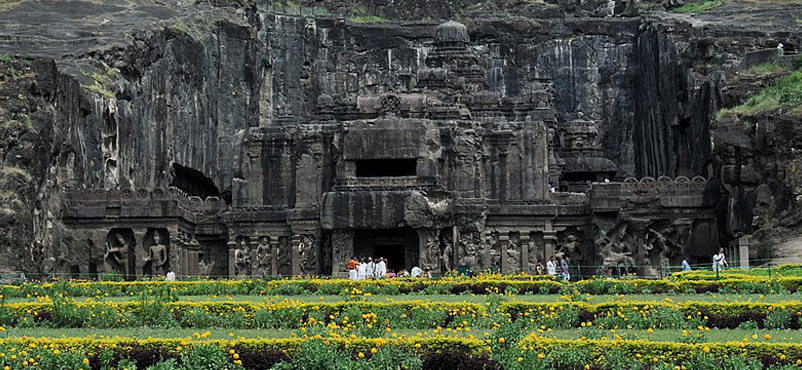The Taj Mahal has been in news for all the wrong reasons. The Supreme Court made some scathing observations on the state of the 17th century monument, prompting the government and other stakeholders in the private domain to come up with possible solutions to safeguard the structure from further damage. We have some experts sharing their views on decoding the Taj conundrum.

CM, Uttar Pradesh on the Taj Mahal
We honour the court’s decision and directives. A rubber dam, on the downstream of Yamuna River, needs to be constructed in Agra. Through the rubber dam and water conservation, we wish to develop the entire region as a Greenbelt, besides creating a waterfront in Agra. We have already made a detailed strategy related to these. These aside, industries that endanger the monument or are hindrances for its growth are being identified and measures are being taken. We are also looking at measures that can improve pollution control.
Need to do away with the Conventional approach to heritage: S K Misra

former Principal Secretary to the Prime Minister
A Management Plan is absolutely a must if you want to really want to ensure the future of these monuments and also if you want to ensure greater inflow of tourist traffic.
Such a plan must include various features such as shopping, parking, facilitate your guides, interpretation centres and recreational areas – all this is a part of the management plan. Governor Jagmohan had done a good job at Ajanta Elora and I think he had started something in Kurukhshetra also. In Hampi, they set up a board for management entrusted with the task of putting up a plan and it was entrusted to the School of Planning and Architecture in Delhi, and they appointed a specialist. But that also has been going on for years. There is so much of lethargy and not everybody appears to understand the importance of planning and providing a great experience to the visitor.
There has to be a Taj Management Authority with a distinguished and experienced management planning, that looks at every aspect including access, the residential places, parking, shopping and more, all in a planned manner
How large an area do you envisage to make a visible impact? What should be the minimum area around the Taj that will make a difference? Some reports suggest they are talking about 10,000 sq km which makes the task hugely impossible?
You proceed layer by layer. So, they first layers should be not more than 2km or at best 5 km, which makes the task manageable, and also provides the much needed first relief to visitors. And have the plan for the next layer and then the next, but start with the minimum required.
But in your understanding as an administrative person with so much experience, who should be the actual nodal authority for handling it? The Supreme Court has yesterday appointed a 3-member team.
It has to be a totally independent authority and given full powers, with Culture, ASI and Tourism servicing this authority with whatever they require, or otherwise it does not work. They should be able to take any assistance from any Ministry and it should be mandatory to assist. Otherwise, again we will continue to have the problem of co-ordination. And this authority should be under an act of Parliament to give it teeth. It will indicate the importance that the government is giving and that they are serious about it.
Your success with Haryana Tourism is legendry. Is there any lesson in that for the present task?
Surely, how did Haryana tourism succeed? When the then chief minister asked me to take over Haryana tourism, I said I have some conditions. I want an independent autonomous authority to be set up with all the departments of government represented including finance. Finance will have an advisory role and no veto powers. Once the budget is voted it is passed on to the authority. We select, appoint or dismiss. Secondly, I want no interference from Government and not even from the chief minister himself. My budget for Haryana Tourism was 1Lakh when we started. It later went up to 5 Lakhs, and soon we had 3 crores and then 5 crores, all within a year. Having a proper structure works or else you are only tinkering with what is already there. The conventional approach does not really work.
Do you think this aspect of the greening and the yellowing of this monument can also be taken up by this Authority?
That will be a part of the terms of reference of the authority. Whatever industries are there, controlling them or shifting them, you leave up to this Authority. You must have a professional approach and professional expertise. This is always not possible within the governmental framework.
The Taj Mahal is a classic case of natural and human interference: C T MISRA

former IAS officer and currently Member secretary, INTACH
C T Misra, former IAS officer and currently Member secretary, INTACH noted that an integrated system, proper Heritage Impact Assessment and a long-term strategy needed to be put to use to ensure that the Taj Mahal was preserved for posterity. Excerpts:
What is the way forward for the Taj Mahal?
The Hon’ble SC has designated three parties, namely Archaeological Survey of India (ASI), Joint Secretary, Ministry of Environment, Forest and Climate Change (MoEF & CC) and Agra Divisional Commissioner to look after the Taj Mahal. It is for the first time that we have a representation from MoEF & CC. It is very important because the environment and climate change etc. have caused all the problems. The Agra Divisional Commissioner is also a very important linkage. These are the actors in this entire scenario. These three bodies will have to sit and chalk a way out.
It is an extremely daunting task because there are no easy solutions. Heritage always gets impacted by nature and human interference. The Taj Mahal is a typical case where both the elements have had an impact. The Taj Mahal is a UNESCO World Heritage Site and one of the seven wonders of the world. The whole world would be interested to know how the monument is being looked after for posterity. Probably, a short-term, medium-term, and long-term solution will be mooted, with a vision document. It is a concern for the country and not just for these three parties involved in the process.
The UP government had suggested that it was keen on projects such as creating a rubber dam on the downstream of Yamuna River, eventually turning the entire region into a Greenbelt, besides developing a waterfront on the lines of the Sabarmati River. The issue, however, has always been the lack of coordination among government agencies. Do you see any cohesion happening in tackling this crisis?
They will have to. They must never get into development work until they look into long-term measures because the monument itself is attracting visitors. If the monument is not viable, then other such measures will not really work.
If they are thinking of it (the riverfront), then they will have to consider the fact that there should be no impact on the monument. The Government has said that Heritage Impact Assessment (HIA) needs to be done before taking up any projects near heritage sites.
The concept of HIA was not there. Earlier, only Environmental Impact Assessment (EIA) was carried out. The first such HIA was carried out by INTACH for Saleemgarh Railway line (Saleemgarh Fort was constructed in 1546 and is part of the Red Fort Complex and a UNESCO World Heritage Site). The railways were good enough to realign their tracks. Therefore, HIAs are very important. So, I am sure when such projects are taken up in Agra, a detailed HIA will be undertaken because it is mandatory to do so.
The SC observed that the Eiffel Tower attracted eight times more tourists than the Taj Mahal. Is it a fair comparison?
The Taj Mahal was never supposed to be a tourist attraction. It was built with a different intention, in a different era. It so happens that the monument, because of its beauty, became a tourist attraction. The Eiffel Tower has been designed in such a way, with the material used, it is for people to climb and interact with the monument.
We must not deprive people from viewing a monument like the Taj Mahal, but it is critical that viewing is managed properly. There must be proper visitor management systems, and crowd management plans. I think it must be an integrated system.
Nurture artisans, knowledge systems to conserve the Taj Mahal
The art had assumed greater significance than the artist, leading to a systematic loss of knowledge systems and traditions involved in creating such heritage structures – critical to ensuring the conservation of the structure itself, suggested Navin Piplani, Principal Director, INTACH Heritage Academy. He was speaking at a lecture on “Taj-A search for Authenticity” at INTACH.

Principal Director, INTACH
Navin Piplani suggested that conserving and nurturing artisans involved in the process of creating traditional art and crafts was crucial towards any attempt to conserve tangible heritage for posterity. He mentioned that the revival of traditional craftsmanship was an element not being given the due attention it deserved. He shared that in one of the projects involving restoring structures in the Taj Mahal complex, funded by TATAs, he used the similar method, used originally, to create limestone, using animals and hand-carts to crush and create lime in the traditional way. “Such processes are important not only for the revival of traditional craftsmanship but also for keeping alive the knowledge systems required to perform such detailed and delicate arts,” he said. “If we do not do it at the Taj Mahal then where else will we do it, “he added, stressing that the Taj Mahal was India’s most iconic tourist site “and it could take a lead in the same.” “People could follow these examples,” he substantiated.
He further noted that no amount of technology and factory-based production could duplicate the intricate designs and patterns used in some of the medieval era structures and it required an in-depth knowledge and instinctive skills to recreate the bygone era.
Reflecting on the relationship between an artist and the object, he rued that tourists were often swayed by the majesty of the Taj Mahal, but seldom took the time to appreciate the artist community for their unwavering dedication towards their craft. “We have forgotten about them, their children and their lives. The object has become more important than the artist creating it,” he said.
Making a mention of the recent trend among private sector companies showing eagerness to adopt a heritage monument – under the Adopt a Heritage Scheme rolled out by the GoI, most recent being the Red Fort, adopted by the Dalmia Group – he pointed out that while private companies were willing to shell crores of rupees to protect a monument, but not a single rupee was being spent to ensure the sustenance of craftsmen, non-negotiable for any long-term conservation effort.
He suggested addressing this dichotomy for making any tangible headway in conserving national heritage.




































